 Today marks the 76th anniversary of D-Day, not likely to get much attention elsewhere than here. Seems like an appropriate moment for an update on the Capa D-Day project. [Update, 12:15 p.m.: Capa’s D-Day image “The Face in the Surf” just showed up in a Lincoln Project anti-Trump ad titled “Leadership.” — A.D.C.]
Today marks the 76th anniversary of D-Day, not likely to get much attention elsewhere than here. Seems like an appropriate moment for an update on the Capa D-Day project. [Update, 12:15 p.m.: Capa’s D-Day image “The Face in the Surf” just showed up in a Lincoln Project anti-Trump ad titled “Leadership.” — A.D.C.]
•
Due to the lockdown that COVID-19 has required, research institutions nationwide have closed their doors until further notice.
Hence my plans to spend time this year pursuing this project at the International Center of Photography’s Robert Capa and Cornell Capa Archives in New Jersey, at the University of Chicago Library (which houses the papers of John G. Morris), and at the New-York Historical Society (which has the LIFE magazine archives, except for its picture files), have gone on indefinite hold.
I don’t expect to find in any of those repositories anything that would substantially challenge or change the version of the Capa D-Day story that this team has established through painstaking research over the past six years — though of course we’re always open to disproof of our reasoned conclusions. I should add that all the institutions that colluded over the decades in creating and disseminating the Capa D-Day myth — ICP, Magnum Photo, Time/Life, Inc. — continue to remain silent in relation to our research; none of the individuals involved (John Morris while he was alive, Cynthia Young at ICP) offered any contrary evidence; and none of those who question our conclusions have put forward any persuasive argument for either the original narrative initiated by Capa or any of its subsequent elaborations by Morris, Young, Capa biographer Richard Whelan, and others.
More probably, then, when I do get to access those primary research materials I will either find corroboration of the results of our investigation to date or, possibly, nothing relevant. Nonetheless, the imperatives of both scholarship and journalism — equal parts of which underpin this project — obligate me to delve into those resources and incorporate any pertinent findings into my final account of our work.
Since I can’t do that, I will turn my attention instead to the following:
- creating a website devoted specifically to this project;
- working on the book version thereof;
- refining the exhibition thereof, and creating a virtual version of it for the website;
- generating a series of videos distilling the research and presenting it in digestible bites, for posting at the new project website and at my YouTube channel.
That should keep me busy until we reach the post-pandemic new normal.
•
Meanwhile, later this month I will start posting Charles Herrick’s detailed analysis of the system put in place by the Supreme Headquarters Allied Expeditionary Forces (SHAEF) to transport D-Day reportage by accredited correspondents from the front lines to the news agencies and press pool eagerly awaiting that material in London.
Suffice it for now to say, as a teaser, that what Herrick learned explains exactly why Capa felt it necessary to transport his films back to London himself, rather than turn them over to a courier on Omaha Beach and stay there to generate further first-hand coverage of the start of the invasion — one of the lurking questions connected to the myth.
•
Rethinking the John Morris Myth
Ever since the moment Capa’s films finally reached his office on the night of June 7, 1944, John Morris had known exactly what took them so long to make the journey from Weymouth, where Capa put them in the hands of a military courier, to LIFE‘s headquarters in London’s Soho district. As did Capa, and every LIFE photographer, and indeed everyone in the magazine’s editorial hierarchy, Morris knew full well that first, like any visual or textual material generated by any accredited journalist, those films would have had to pass through the rigorous censorship system established by the Supreme Headquarters Allied Expeditionary Forces (SHAEF).
In a series of posts at this blog that began exactly one year ago, Charles Herrick spelled out the timeframe and itinerary through which Capa’s films made their transit from Omaha Beach to Morris’s desk at LIFE‘s London office. Yet never once in the six decades over the course of which he so energetically propagated the self-serving myth of the imaginary darkroom disaster did Morris so much as mention the role played in that day’s events by SHAEF’s Ministry of Information, whose staff decided which Capa images LIFE could publish and excised others before Morris ever got to see them — a process that fully explains the delay in those pre-censored images reaching Morris on the night of June 7.
Yet, pressed on this in a 2014 Q&A exchange with me, given a chance to acknowledge the central role played in that sequence of events by the SHAEF censors, Morris responded only, “I wonder myself why it took so long for the films to reach London.” Such on-the-record dissembling, hyperbole, and outright lying typified Morris’s public relationship to Capa and the various Capa myths at least since the moment when, as the “executive editor” of Magnum Photos, he submitted the previously discussed selection of Capa’s images and their captions to Tom Maloney for publication in the 1955 U.S. Camera Annual shortly after Capa’s death in 1954.
•
Thinking about Morris’s role in the promulgation of this fiction has led me to wonder about Morris’s credibility in general, and specifically about his account of his years at LIFE. Bits and pieces of that phase of his career, and some questions in relation thereto, have entered into this investigation at various points, but I have never assembled them into one coherent sequence. Here’s what we know:
• Having first groomed Morris as a CBOB (“college boy office boy”) in the New York headquarters of LIFE and then tested him out as a Hollywood correspondent, editors Wilson Hicks and Ed Thompson promoted him to “assistant picture editor” — the highest title he would hold at the magazine while overseas — and sent him to London in late September of 1943, specifically charged with prepping and forwarding the best of whatever photographs came in from their assigned photographers and other sources. With the fictitious, melodramatic narrative of the supposedly “ruined” negatives and his starring role therein now stripped away, it’s fair to say that Morris did not distinguish himself in any professional way during his 11 months at LIFE‘s London bureau.
• In August of 1944, after the liberation of Paris, Morris had a brief stint at the magazine’s reopened bureau in that city, leaving on November 20, 1944 to return to the States, at his own request. Once back, he got drafted (briefly) and discharged when the war ended; spent some months in LIFE‘s Chicago bureau; and then left LIFE to become picture editor of Ladies Home Journal in 1946.
• As he recalls in his 1998 memoir, Get the Picture: A Personal History of Photojournalism, Morris took the LHJ job at the suggestion of Wilson Hicks. And certainly, given how competitively territorial he found the office politics at LIFE, he would have welcomed the autonomy and relative peace and quiet of his LHJ situation. His marriage to his first wife, Mary Adele Crosby, and their growing family — four children in all — likely played a part in his decision to make that career move.
However, I find it revealing that, having had ample opportunity and sufficient evidence on which to base an assessment of Morris’s long-term suitability for post-war positioning in LIFE‘s New York-based chain of command, Hicks (and Thompson too, I assume) instead found a way to direct him elsewhere, with their blessings and, presumably, a fulsome recommendation.
Did they consider him ill-suited to working on hard and breaking news? As its title suggests, LHJ was not a news-based competitor to the weekly LIFE but a monthly women’s magazine, what we would now call a lifestyle periodical, at that time dealing exclusively with “soft” subjects. Did they gauge Morris as temperamentally not a good fit for LIFE?
•
The answer may lie in Morris’s own account of his 14 months overseas during the war, as presented in his memoir, Get the Picture. By his own indirect confession, Morris consistently had self-inflicted problems with his superiors at LIFE, regularly seeing them as competitors in what he chose to construe as “turf war(s)” resulting from “Time Inc.’s ongoing experiment with two-man rule.” Witness, in this regard, his apparently one-sided hostile relationships to LIFE staffers (and Morris’s seniors and superiors) Sherry Mangan and Elmer Lower, as detailed in previous posts.
Reading between the lines, he manufactured a conflict with Mangan that required the intervention of London bureau chief Walter Graebner during the months before D-Day, and bitterly resented the fact that Lower, far more mature and accomplished that he, got to head the reopened Paris bureau after the liberation of that city by the Allies. That he himself had no experience, expertise, or other qualifications for that plum job apparently did nothing to mitigate his jealousy, which endured through the publication of his memoir in 1998, and even manifested itself during public appearances as late as 2014.
I should add that, his putative friendship with Robert Capa aside, I have found no evidence to suggest that Morris had endeared himself to the LIFE staff photographers with whom he worked in London and Paris during the war — most of them based again in New York City post-war. To the contrary, at least one of them, Bob Landry, detested Morris, to such an extent that (according to Morris’s account) Landry actually tried to punch him soon after D-Day. So Landry and his colleagues on the photo staff may have had some say in the matter of Morris’s future at LIFE, at least in terms of informal input to management. The same holds true for Graebner, Mangan, and Lower.
•
This leads to questions about Morris’s friendship with both Robert Capa and Cornell Capa. Clearly he became part of the circle that formed around the gregarious older brother at the Upper West Side apartment of his mother Julia once she and Cornell emigrated to New York. According to Get the Picture, Morris and his wife Adele joined the extended family that gathered there regularly to enjoy each other’s company and Julia’s cooking.
Acceptance into that heady atmosphere of working professional photojournalists — even though only a lowly “college boy office boy” at LIFE, with no authority whatsoever — must have mattered greatly to the young Morris, who states that as a result he came to consider Robert “his adopted Hungarian brother.” But even this qualifies as self-aggrandizement. If anyone did the adopting in that relationship, it was the worldly older photographer, not the callow younger LIFE errand boy.
Patently the relationship meant much to Morris. Did Capa reciprocate those sentiments? No hard evidence suggests that he did. Capa made friends widely and easily, but many of those relationships were inevitably superficial. Aside from the two weeks in late summer of 1944 during which Morris tagged along with Capa and others in France as they followed the troops northward toward Paris, making a handful of humdrum photographs along the way, nothing indicates that they spent much time together. Remarkably, Morris’s memoir contains not a single account of any substantial one-on-one experience with Capa, from the time they first met until Capa’s death in 1954 — no deep private conversations, no confidences shared. Given that he proves himself an inveterate name-dropper, the absence in his recollections of any mention of hanging out with Capa’s circle — writers Ernest Hemingway and Irwin Shaw and William Saroyan, Hollywood director George Stevens, Capa’s lover “Pinky” — speaks volumes.
Tellingly, Capa makes no mention of Morris in his 1947 WWII memoir Slightly Out of Focus. Nor do Capa’s surviving wartime letters to his family, or theirs to him, include any reference to Morris, as one would expect if Morris had indeed become more than a casual acquaintance. (Are there letters from Morris to the family, or from them to him? It will take my postponed research in the archives to answer that.)
Let’s also not forget that, whatever social relationship pertained between them, Morris was not even Capa’s first choice for the directorship of Magnum when he himself decided to step down from that role. He asked Morris to take that on only after Elmer Lower, with whom he had worked at LIFE, turned him down. By 1953, when Capa hired him, Morris still had no experience handling hard-news assignments. But, in his editorial role at Ladies Home Journal, he had served for years as Magnum’s main client, commissioning lucrative soft-news features from Magnum members and licensing rights to other images they made. That alone would have endeared him to the agency’s membership. He was willing to clean up the mess that Capa left him. And, given his younger-sibling relationship to Capa, he would not likely challenge his predecessor’s eccentric ways.
Indeed, the closest he seems to have come to membership in Capa’s innermost circle appears to have taken place posthumously, when, with the permission of Capa’s mother Julia and brother Cornell, Morris arranged for Robert’s burial in a Quaker cemetery in Amawalk, NY. Immediately thereafter he became the prime public promulgator of the D-Day myth, and a close collaborator with Cornell on its dissemination, a project that would begin to bear fruit a decade later.
The evidence, then, suggests that while his connection to Robert Capa mattered deeply to Morris both personally and professionally, for Capa the relationship on those levels proved more peripheral — at least until the brief year between his hiring of Morris for Magnum and his death in Vietnam. Not a two-way street, in short, though Morris always took pains to intimate otherwise.
•
(For an index of links to all posts in this series, click here.)
•
 Special offer: If you want me to either continue pursuing a particular subject or give you a break and (for one post) write on a topic — my choice — other than the current main story, make a donation of $50 via the PayPal widget below, indicating your preference in a note accompanying your donation. I’ll credit you as that new post’s sponsor, and link to a website of your choosing.
Special offer: If you want me to either continue pursuing a particular subject or give you a break and (for one post) write on a topic — my choice — other than the current main story, make a donation of $50 via the PayPal widget below, indicating your preference in a note accompanying your donation. I’ll credit you as that new post’s sponsor, and link to a website of your choosing.
And, as a bonus, I’ll send you a signed copy of my new book, poetic license / poetic justice — published under my full name, Allan Douglass Coleman, which I use for my creative writing.


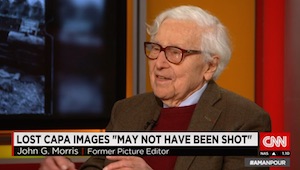
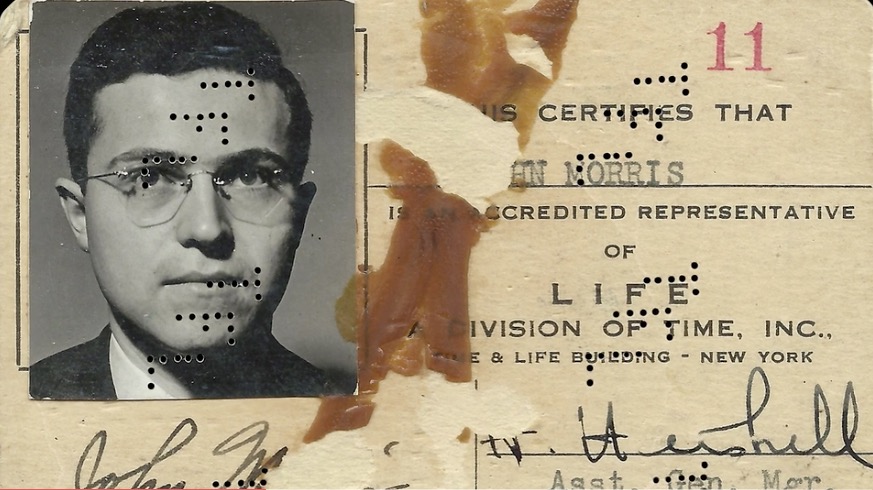
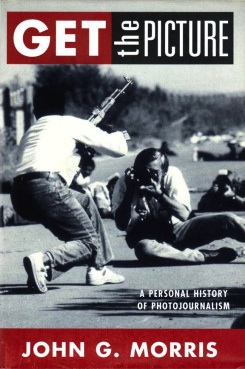
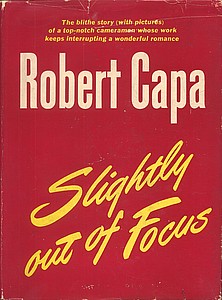
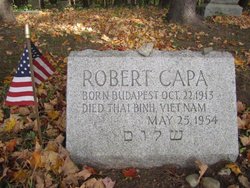




SF Chronicle today has Peanuts character Snoopy in the water attacking.
https://www.gocomics.com/peanuts/2020/06/06
Charles Schulz was not among the invasion forces on D-Day, but he became a major supporter of D-Day commemoration, including a series of anniversary “Peanuts” strips with Snoopy working his way through the Omaha Beach obstacles — clearly based on Capa’s photos. I guess his estate has decided to carry on the tradition by sending out vintage strips for publication every D-Day.